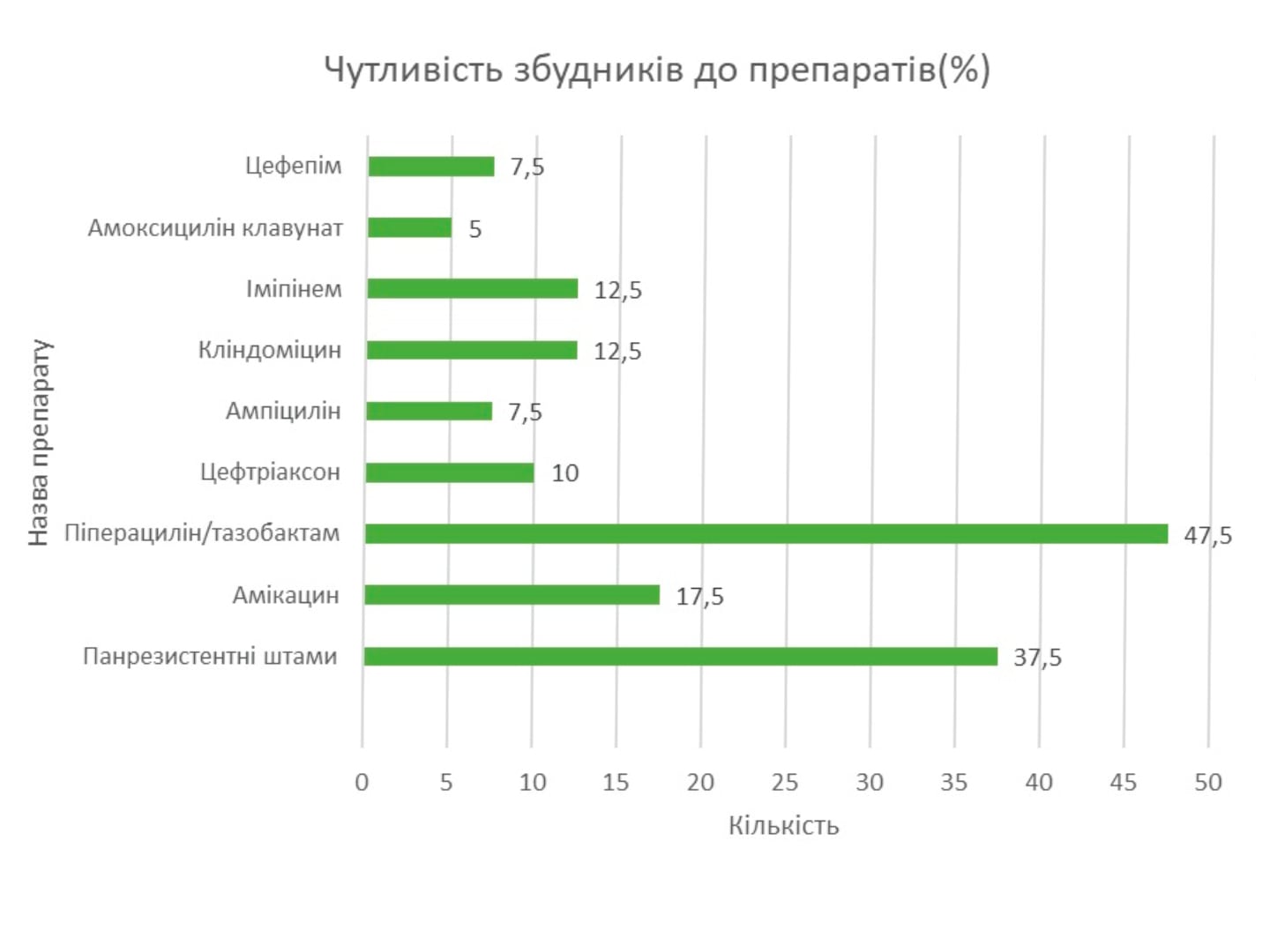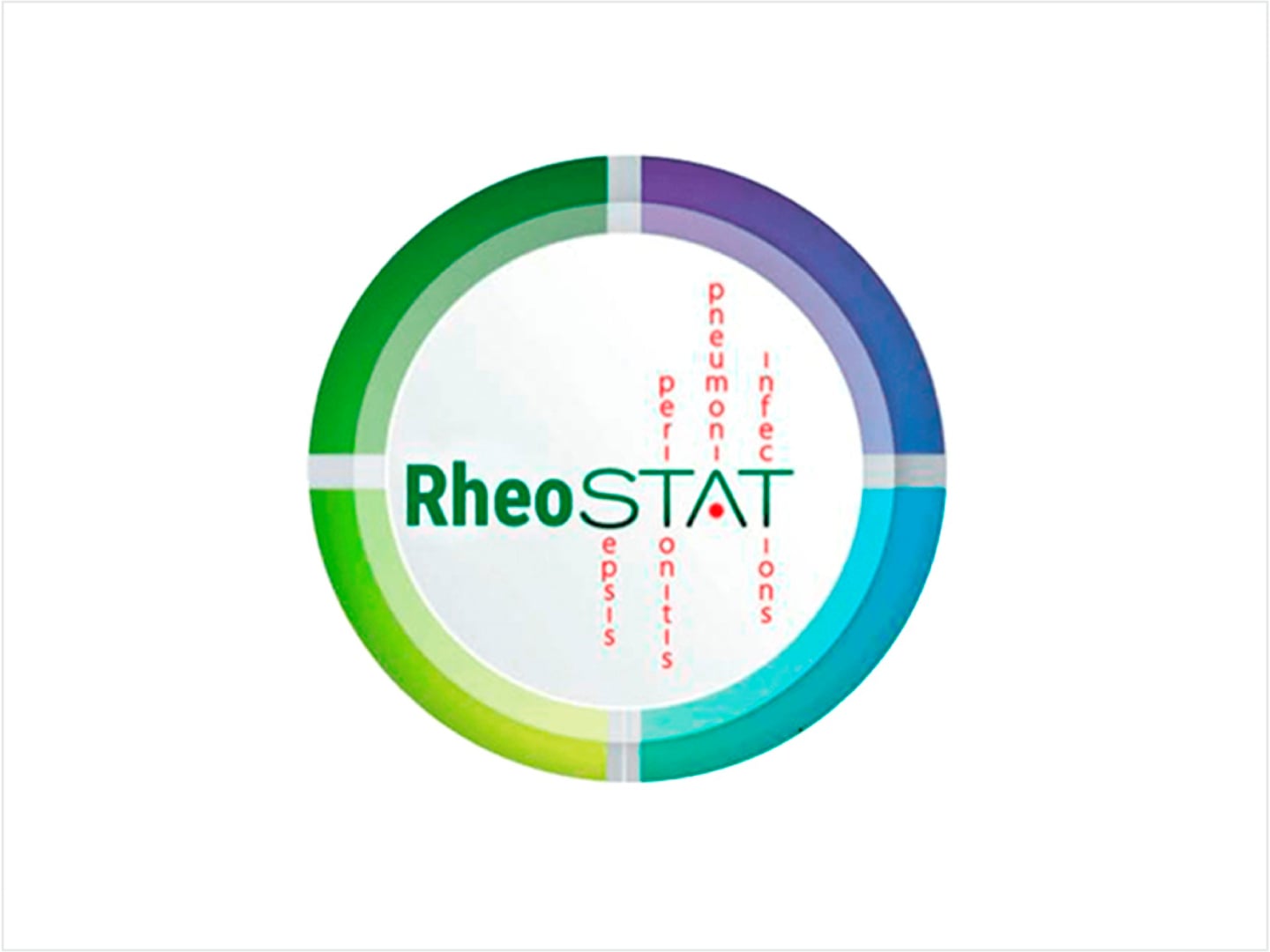Dexmedetomidine for sedation in intensive care (literature review and clinical experience)
The anesthesiologist and specialist on medical emergency conditions
Abstract. Dexmedetomidine is a fairly new and promising drug for use in intensive care and surgery. Due to the fact that it is an agonist of alpha-2-adrenoceptors, dexmedetomidine has an analgesic, sedative effect and affects hemodynamic parameters. Due to the fact that dexmedetomedin does not have the ability to suppress respiration, it is used in patients with respiratory disorders. Dexmedetomidine has minimal side effects and a wide range of uses.
Key words: dexmedetomidine, sedation, pain, intensive care, sleep, delirium.
Authors:
Dmytriiev D. V., Bortnik D. І., Rudnitsky Y. V., Geranin S. V., Korenchuk N. I., Vinnytsia Regional Clinical Highly Specialized Endocrinology Center
Literature:
- Maze M, Angst MS. Dexmedetomidine and Opioid Interactions: Defining the Role of Dexmedetomidine for Intensive Care Unit Se-dation. Anesthesiology [Internet]. Ovid Technologies (Wolters Klu-wer Health); 2004 nov;101(5):1059–61. Available from: http:// dx.doi.org/10.1097/00000542–200411000–00002
- Nelson LE, Lu J, Guo T, Saper CB, Franks nP, Maze M. The 2-Ad-renoceptor Agonist Dexmedetomidine Converges on an Endog-enous Sleep-promoting Pathway to Exert Its Sedative Effects. Anesthesiology [Internet]. Ovid Technologies (Wolters Kluwer Health); 2003 Feb;98(2):428–36. Available from: http://doi. org/10.1097/00000542–200302000–00024
- Venn RM, Bradshaw CJ, Spencer R, Brealey D, Caudwell E, naugh-ton C, et al. Preliminary UK experience of dexmedetomidine, a novel agent for postoperative sedation in the intensive care unit. Anaesthesia [Internet]. Wiley; 1999 Dec;54(12):1136–42. Avail-able from: http://doi.org/10.1046/j.1365–2044.1999.01114.x
- Angst MS, Ramaswamy B, Davies MF, Maze M. Comparative Analgesic and Mental Effects of Increasing Plasma Concen-trations of Dexmedetomidine and Alfentanil in Humans. An-esthesiology [Internet]. Ovid Technologies (Wolters Kluwer Health); 2004 Sep;101(3):744–52. Available from: http://doi. org/10.1097/00000542–200409000–00024
- Cortinez LI, Hsu Y-W, Sum-Ping ST, Young C, Keifer JC, Ma-cLeod D, et al. Dexmedetomidine Pharmacodynamics: Part II. Anesthesiology [Internet]. Ovid Technologies (Wolters Kluwer Health); 2004 nov;101(5):1077–83. Available from: http://doi. org/10.1097/00000542–200411000–00006
- Ebert TJ, Hall JE, Barney JA, Uhrich TD, Colinco MD. The Effects of Increasing Plasma Concentrations of Dexmedetomidine in Hu-mans. Anesthesiology [Internet]. Ovid Technologies (Wolters Klu-wer Health); 2000 Aug;93(2):382–94. Available from: http://doi. org/10.1097/00000542–200008000–00016
- Arain SR, Ruehlow RM, Uhrich TD, Ebert TJ. The Efficacy of Dex-medetomidine Versus Morphine for Postoperative Analgesia After Major Inpatient Surgery. Anesthesia & Analgesia [Internet]. Ovid Technologies (Wolters Kluwer Health); 2004 Jan;153–8. Available from: http://doi.org/10.1213/01.ane.0000093225.39866.75
- Aryan HE, Box KW, Ibrahim D, Desiraju U, Ames CP. Safety and ef-ficacy of dexmedetomidine in neurosurgical patients. Brain Injury [Internet]. Informa UK Limited; 2006 Jan;20(8):791–8. Available from: http://doi.org/10.1080/02699050600789447
- Zornow MH, Scheller MS, Sheehan PB et al. Intracranial pres-sure effects ofdexmedetomidine in rabbits. Anesth. Analg. 1992;75:232—237.
- Farag E, Argalious M, Sessler DI, et al. Use of alpha(2)-agonists in neuroanesthesia: An overview. Ochsner J. 2011;11(1):57—69.
- Huupponen E, Maksimow A, Lapinlampi P, Srkel M, Saas-tamoinen A, Snapir A, et al. Electroencephalogram spindle ac-tivity during dexmedetomidine sedation and physiological sleep. Acta Anaesthesiologica Scandinavica [Internet]. Wiley; 2008 Feb;52(2):289–94. Available from: http://doi.org/10.1111/ j.1399–6576.2007.01537.x
- Paris A, Tonner PH Dexmedetomidine in anaesthesia. Curr. Opin. Anaesthesiol 2 005;18:412—418.
- Engelhard K, Werner C, Eberspcher E, Bachl M, Blobner M, Hildt E, et al. The Effect of the 2-Agonist Dexmedetomidine and the n-Methyl-d-Aspartate Antagonist S(+)-Ketamine on the Expression of Apoptosis-Regulating Proteins After Incom-plete Cerebral Ischemia and Reperfusion in Rats. Anesthe-sia & Analgesia [Internet]. Ovid Technologies (Wolters Kluwer Health); 2003 Feb;96(2):524–31. Available from: http://doi. org/10.1213/00000539–200302000–00041
- Frlich MA, Arabshahi A, Katholi C, Prasain J, Barnes S. Hemody-namic characteristics of midazolam, propofol, and dexmedetomi-dine in healthy volunteers. Journal of Clinical Anesthesia [Inter-net]. Elsevier BV; 2011 May;23(3):218–23. Available from: http:// doi.org/10.1016/j.jclinane.2010.09.006
- Bloor BC, Ward DS, Belleville JP, Maze M. Effects of Intravenous Dexmedetomidine in Humans. Anesthesiology [Internet]. Ovid Technologies (Wolters Kluwer Health); 1992 Dec;77(6):1134–42. Available from: http://doi.org/10.1097/00000542–199212000– 00014
- Ebert TJ, Hall JE, Barney JA, et al. The effects of increasing plas-ma concentrations of dexmedetomidineinhumans. Anesthesiology 2000;93:382—394.
- E. Ramsay MA, Luterman DL. Dexmedetomidine as a Total Intrave-nous Anesthetic Agent. Anesthesiology [Internet]. Ovid Technolo-gies (Wolters Kluwer Health); 2004 Sep;101(3):787–90. Available from: http://doi.org/10.1097/00000542–200409000–00028
- Scholz J, Tonner PH Alpha2-adrenoceptor agonists in anaesthesia: a new paradigm. Curr. Opin. Anaesthesiol. 2000;13:437—442.
- Precedex (dexmedetomidine hydrochloride) injection. For intra-venous use. — Prescribing information. LakeForest, IL, USA: Hos-piraInc. 2011.
- Farag E, Argalious M, Sessler DI, et al. Use of alpha(2)-agonists in neuroanesthesia: An overview. Ochsner J. 2011; 11 (1): 57—69.
- Jakob SM. Dexmedetomidine vs Midazolam or Propofol for Seda-tion During Prolonged Mechanical Ventilation. JAMA [Internet]. American Medical Association (AMA); 2012 Mar 21;307(11):1151. Available from: http://doi.org/10.1001/jama.2012.304
- Klamt JG, de Andrade Vicente WV et al. Effects of dexmedetomi-dine-fentanyl infusion on blood pressure and heart rate during cardiac surgery in children. Anаesthesiol. Res. Pract. 2010.
- Wijeysundera Dn, naik JS, Scott Beattie W. Alpha-2 adrenergic agonists to prevent perioperative cardiovascular complications: The American Journal of Medicine [Internet]. Elsevier BV; 2003 Jun;114(9):742–52. Available from: http://doi.org/10.1016/ s0002–9343(03)00165–7
- Jaionen J, Hynynen M, Kuitunen A, Heikkila H, Perttila J, Salmen-pera M, et al. Dexmedetomidine as an Anesthetic Adjunct in Cor-onary Artery Bypass Grafting. Anesthesiology [Internet]. Ovid Technologies (Wolters Kluwer Health); 1997 Feb;86(2):331–45. Available from: http://doi.org/10.1097/00000542–199702000– 00009
- Hofer RE, Sprung J, Sarr MG, Wedel DJ. Anesthesia for a patient with morbid obesity using dexmedetomidine without narcotics. Canadi-an Journal of Anesthesia/Journal canadien d’anesthsie [Internet]. Springer Science and Business Media LLC; 2005 Feb;52(2):176– 80. Available from: http://doi.org/10.1007/bf03027725
- Abdelmalak B, Makary L, Hoban J, Doyle DJ. Dexmedetomidine as sole sedative for awake intubation in management of the crit-ical airway. Journal of Clinical Anesthesia [Internet]. Elsevier BV; 2007 Aug;19(5):370–3. Available from: http://doi.org/10.1016/j. jclinane.2006.09.006
- Koroglu A, Demirbilek S, Teksan H, Sagır O, But AK, Ersoy MO. Sedative, haemodynamic and respiratory effects of dexmedetomi-dine in children undergoing magnetic resonance imaging examina-tion: preliminary results. British Journal of Anaesthesia [Internet]. Elsevier BV; 2005 Jun;94(6):821–4. Available from: http://doi. org/10.1093/bja/aei119
- Meng Q, Xia Z, Luo T, Wu Y, Tang L, Zhao B, et al. Dexmedetomidine reduces emergence agitation after tonsillectomy in children by sevoflurane anesthesia: A case-control study. International Jour-nal of Pediatric Otorhinolaryngology [Internet]. Elsevier BV; 2012 Jul;76(7):1036–41. Available from: http://doi.org/10.1016/j. ijporl.2012.03.028
- Greenberg JW, Lancaster TS, Schuessler RB, Melby SJ. Postop-erative atrial fibrillation following cardiac surgery: a persistent complication. European Journal of Cardio-Thoracic Surgery [Inter-net]. Oxford University Press (OUP); 2017 Mar 27;52(4):665–72. Available from: http://doi.org/10.1093/ejcts/ezx039
- Almassi GH, Schowalter T, nicolosi AC, Aggarwal A, Moritz TE, Henderson WG, et al. Atrial Fibrillation After Cardiac Surgery. Annals of Surgery [Internet]. Ovid Technologies (Wolters Kluw-er Health); 1997 Oct;226(4):501–13. Available from: http://doi. org/10.1097/00000658–199710000–00011
- Liu X, Zhang K, Wang W, Xie G, Fang X. Dexmedetomidine sedation reduces atrial fibrillation after cardiac surgery compared to propo-fol: a randomized controlled trial. Critical Care [Internet]. Springer Science and Business Media LLC; 2016 Sep 21;20(1). Available from: http://doi.org/10.1186/s13054–016–1480–5
- Turan A, Bashour CA, You J, Kirkova Y, Kurz A, Sessler DI, et al. Dexmedetomidine sedation after cardiac surgery decreases atrial arrhythmias. Journal of Clinical Anesthesia [Internet]. Elsevier BV; 2014 Dec;26(8):634–42. Available from: http://doi.org/10.1016/j. jclinane.2014.05.009
- Yang Liu1, Lei Zhang2, Suozhu Wang1, Feiping Lu1, Jie Zhen1, Wei Chen. Dexmedetomidine Reduces Atrial Fibrillation After Adult Cardiac Surgery: A Meta Analysis of Randomized Controlled Trials.
- Mantz J, Josserand J, Hamada S. Dexmedetomidine: new insights. Eur J Anaesthesiol 2011;28:3–6.
- Yoshitomi T, Kohjitani A, Maeda S, Higuchi H, Shimada M, Miy-awaki T. Dexmedetomidine Enhances the Local Anesthetic Action of Lidocaine via an -2A Adrenoceptor. Anesthesia & Analge-sia [Internet]. Ovid Technologies (Wolters Kluwer Health); 2008 Jul;107(1):96–101. Available from: http://doi.org/10.1213/ ane.0b013e318176be73
- Arain SR, Ruehlow RM, Uhrich TD, Ebert TJ. The Efficacy of Dex-medetomidine Versus Morphine for Postoperative Analgesia After Major Inpatient Surgery. Anesthesia & Analgesia [Internet]. Ovid Technologies (Wolters Kluwer Health); 2004 Jan;153–8. Available from: http://doi.org/10.1213/01.ane.0000093225.39866.75
- Naaz S, Ozair E. Dexmedetomidine in current anaesthesia prac-tice-a review. Journal of clinical and diagnostic research: JCDR. 2014 Oct;8(10):GE01-GE04.
- Obayah GM, Refaie A, Aboushanab O, Ibraheem n, Abdelazees M. Addition of dexmedetomidine to bupivacaine for greater palatine nerve block prolongs postoperative analgesia after cleft palate re-pair. European Journal of Anaesthesiology [Internet]. Ovid Tech-nologies (Wolters Kluwer Health); 2010 Mar;27(3):280–4. Avail-able from: http://doi.org/10.1097/eja.0b013e3283347c15
- Anttila M, PenttilJ, Helminen A, Vuorilehto L, Scheinin H. Bio-availability of dexmedetomidine after extravascular doses in healthy subjects. British Journal of Clinical Pharmacology [Inter-net]. Wiley; 2003 Aug 29;56(6):691–3. Available from: http://doi. org/10.1046/j.1365–2125.2003.01944.x
- Cimen ZS, Hanci A, Sivrikaya GU, Kilinc LT, Erol MK. Comparison of buccal and nasal dexmedetomidine premedication for pedi-atric patients. Lerman J, editor. Pediatric Anesthesia [Internet]. Wiley; 2012 Sep 18;23(2):134–8. Available from: http://doi. org/10.1111/pan.12025
- Yuen VM, Hui TW, Irwin MG, Yuen MK. A Comparison of Intranasal Dexmedetomidine and Oral Midazolam for Premedication in Pedi-atric Anesthesia: A Double-Blinded Randomized Controlled Trial. Anesthesia & Analgesia [Internet]. Ovid Technologies (Wolters Kluwer Health); 2008 Jun;106(6):1715–21. Available from: http:// doi.org/10.1213/ane.0b013e31816c8929
- Jacobi J, Fraser GL, Coursin DB, Riker RR, Fontaine D, Wittbrodt ET, et al. Clinical practice guidelines for the sustained use of sed-atives and analgesics in the critically ill adult. Critical Care Med-icine [Internet]. Ovid Technologies (Wolters Kluwer Health); 2002 Jan;30(1):119–41. Available from: http://doi.org/10.1097/ 00003246–200201000–00020
- Riker RR. Dexmedetomidine vs Midazolam for Sedation of Critically Ill Patients<subtitle>A Randomized Trial</subtitle>. JAMA [Inter-net]. American Medical Association (AMA); 2009 Feb 4;301(5):489. Available from: http://doi.org/10.1001/jama.2009.56
- Ely EW. Delirium as a Predictor of Mortality in Mechanically Ven-tilated Patients in the Intensive Care Unit. JAMA [Internet]. Amer-ican Medical Association (AMA); 2004 Apr 14;291(14):1753. Available from: http://doi.org/10.1001/jama.291.14.1753
- Frontera JA. Delirium and sedation in the ICU. neurocrit Care 2011;14:463–74.
- Sanders RD, Maze M. Contribution of sedative-hypnotic agents to delirium via modulation of the sleep pathway. Canadian Journal of Anesthesia/Journal canadien d’anesthsie [Internet]. Springer Sci-ence and Business Media LLC; 2010 Dec 18;58(2):149–56. Avail-able from: http://doi.org/10.1007/s12630–010–9421–2
- Borbly AA, Achermann P. Ultradian dynamics of sleep after a single dose of benzodiazepine hypnotics. European Journal of Pharmacology [Internet]. Elsevier BV; 1991 Mar;195(1):11–8. Available from: http://doi.org/10.1016/0014–2999(91)90376–2
- Huupponen E, maksimow A, lapinlampi P, Srkel M, Saas-tamoinen A, Snapir A, et al. Electroencephalogram spindle ac-tivity during dexmedetomidine sedation and physiological sleep. Acta Anaesthesiologica Scandinavica [Internet]. Wiley; 2008 Feb;52(2):289–94. Available from: http://doi.org/10.1111/ j.1399–6576.2007.01537.x
- Riker RR. Dexmedetomidine vs Midazolam for Sedation of Crit-ically Ill Patients<subtitle>A Randomized Trial</subtitle>. JAMA [Internet]. American Medical Association (AMA); 2009 Feb 4;301(5):489. Available from: http://doi.org/10.1001/jama. 2009.56
- Pandharipande PP, Pun BT, Herr DL, Maze M, Girard TD, Miller RR, et al. Effect of Sedation With Dexmedetomidine vs Lorazepam on Acute Brain Dysfunction in Mechanically Ventilated Patients. JAMA [Internet]. American Medical Association (AMA); 2007 Dec 12;298(22):2644. Available from: http://doi.org/10.1001/ jama.298.22.2644.
- Soo-Bong Yu. Dexmedetomidine sedation in ICU. Korean J Anes-thesiol 2012 May;62(5):405–411



